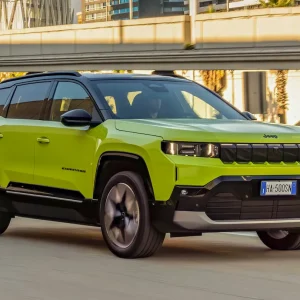The Honda HR-V has occupied an unusual position in the small SUV segment since its launch a few years ago. Based on the same platform as the Jazz, it feels surprisingly spacious.
Its pricing, however, was closer to medium SUVs such as the Kia Sportage and Nissan Qashqai, so it never seemed particularly good value for money.
For 2019, Honda chose to not only give its smallest crossover a facelift but also exploit a bit of the brand’s racing heritage by introducing a Sport grade to the
line-up. In the new Sport derivative, the power output is tweaked up to 182hp, thanks to a turbo on the 1.5-litre VTEC petrol engine.
More than just sporty looks
The new flagship Sport variant gets a more dynamic look, courtesy of full LED headlights and a slim black front splitter. Black door mirror caps, side skirts, wheel arches, and matt black 18in alloy wheels further distinguish it from the rest of the line-up. Plus, at the rear, you get twin exhaust pipes and LED taillights.
The Sport also receives additions such as Honda’s ‘agile handling assist’ torque vectoring to maintain more control when cornering and reduce understeer, and performance dampers to make it feel more dynamic than the standard HR-V. We found the car offered well-weighted steering that translates into sporty overall handling; there is little body roll around turns and the crossover feels truly planted to the road.
Its ride is firmer than in other versions of the car, becoming more apparent when the 18in alloys are challenged with imperfect road surfaces, but there is none of that usual fidgeting you often experience in sported-up versions of cars that were never really meant to be sporty.
Standout practicality
All models feature a key HR-V selling point; namely, superior practicality you can really make the most of in the shape of its cleverly versatile ‘Magic Seat’ interior, which makes every other car in the class seem like they are not trying hard enough.
The rear seat base can be flipped upward to liberate a wide and tall additional area for items that need transporting upright, or the seatbacks can fold flat to increase the available luggage volume to 1,473 litres. The versatile rear seats are made possible by locating the fuel tank under the front seats.
Standard safety features, also known as Honda Sensing technology, carried over from the existing HR-V range include autonomous emergency braking,
lane-keep assist, lane departure warning, road departure mitigation, adaptive cruise control and traffic sign recognition. Other standard equipment includes a 7in touchscreen, which we found easy to use while on the move.
Premium feel, premium price
A combination of soft-touch, wine-red leather and black fabric seat facing, along with extended wine-red touches on the dashboard, add a touch of elegance to the interior and single the Sport out from the rest of the HR-V range.
It is pretty pricey at nearly £30,000 P11D, and there aren’t too many compact SUVs in this price bracket (unless they offer electric power). While we welcome any efforts on the part of Honda to make the HR-V seem more appealing – because it is fundamentally a good car – the range-topping Sport variant is probably not likely to appear on many fleet choice lists.
Honda HR-V Sport CVT auto
P11D: £29,075
On sale: Now
Residual value: 35.1%
Depreciation: £18,875
Fuel: £8,207
Service, maintenance and repair: £2,521
Cost per mile: 50.1p
Fuel consumption: 32.9mpg
CO2 (BIK band): 137g/km (31%)
BIK 20/40% a month: £150/£300
Boot space: 448 litres
Engine size/power: 1,590cc/180hp





